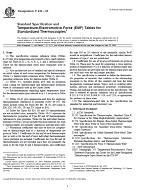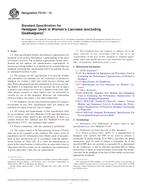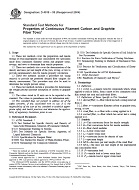1.1 This test method provides a measure of the chemical durability of a simulated or radioactive monolithic waste form, such as a glass, ceramic, cement (grout), or cermet, in a test solution at temperatures <100°C under low specimen surface- area-to-leachant volume (S/V) ratio conditions.
1.2 This test method can be used to characterize the dissolution or leaching behaviors of various simulated or radioactive waste forms in various leachants under the specific conditions of the test based on analysis of the test solution. Data from this test are used to calculate normalized elemental mass loss values from specimens exposed to aqueous solutions at temperatures <100°C.
1.3 The test is conducted under static conditions in a constant solution volume and at a constant temperature. The reactivity of the test specimen is determined from the amounts of components released and accumulated in the solution over the test duration. A wide range of test conditions can be used to study material behavior, including various leachant composition, specimen surface area-to-leachant volume ratios, temperatures, and test durations.
1.4 Three leachant compositions and four reference test matrices of test conditions are recommended to characterize materials behavior and facilitate interlaboratory comparisons of tests results.
1.5 Specimen surfaces may become altered during this test. Although not part of the test method, it is recommended that these altered surface regions be examined to characterize chemical and physical changes due to the reaction of waste forms during static exposure to solutions.
1.6 This test method is not recommended for evaluating metallic materials, the degradation of which includes oxidation reactions that are not controlled by this test method.
1.7 This test method must be performed in accordance with all applicable quality assurance requirements for acceptance of the data.
1.8 The values stated in SI units are to be regarded as standard. No other units of measurement are included in this standard.
1.9 This standard does not purport to address all of the safety concerns, if any, associated with its use. It is the responsibility of the user of this standard to establish appropriate safety and health practices and determine the applicability of regulatory limitations prior to use. For a specific hazard statement, see 7.3.2.
Product Details
- Published:
- 06/01/2010
- Number of Pages:
- 22
- File Size:
- 1 file , 310 KB
- Redline File Size:
- 2 files , 670 KB


